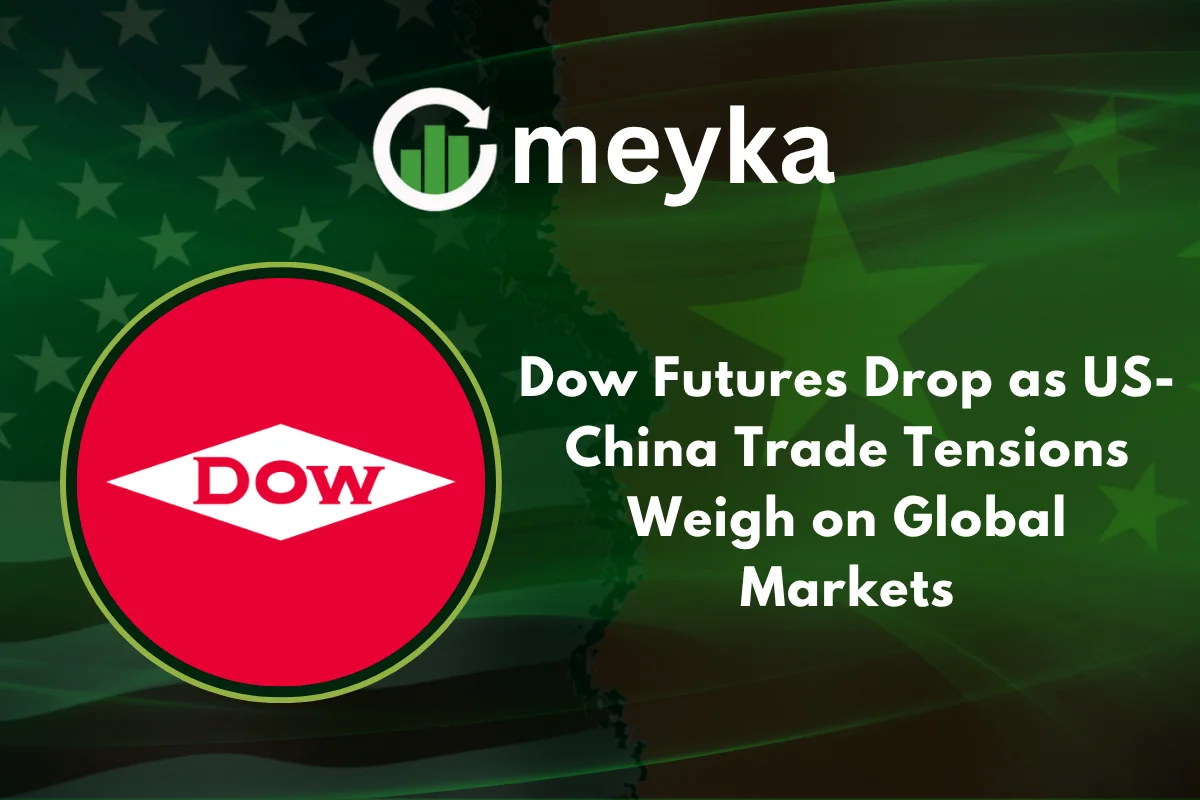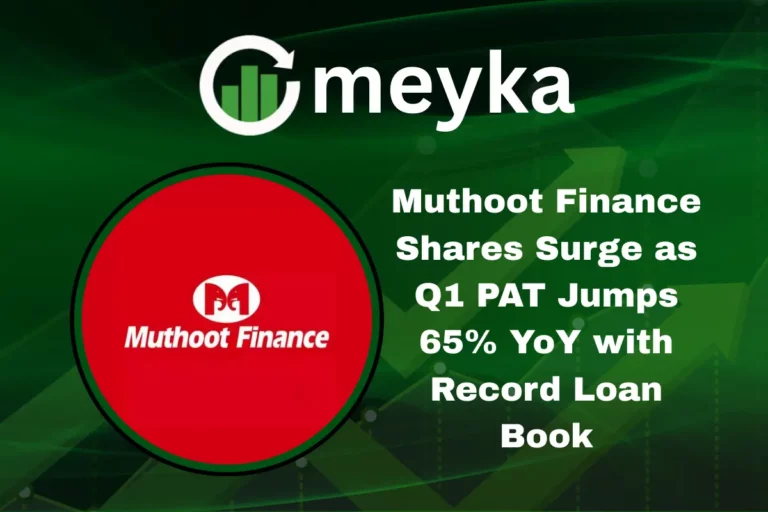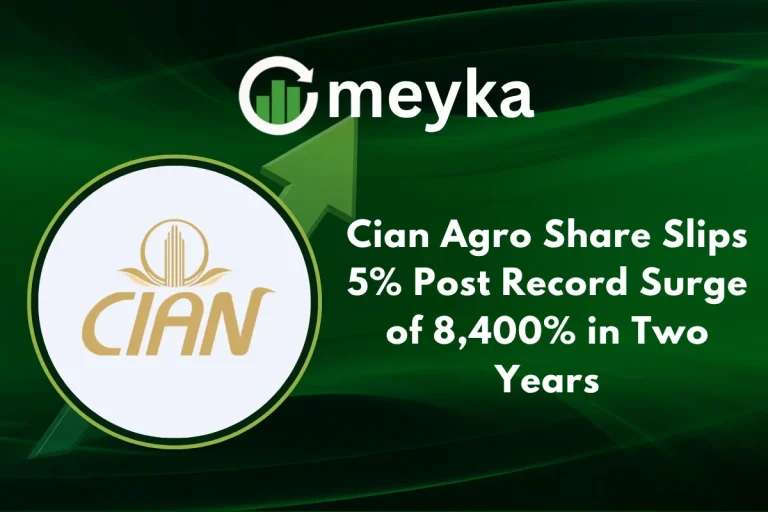Dow Futures Drop as US-China Trade Tensions Weigh on Global Markets
In early trade today, Dow futures sank sharply, reacting to renewed friction between the United States and China. This drop signals deep investor apprehension over global trade risks and could be a precursor to heightened volatility across stock indices.
What’s Driving the Dow Futures Decline?
Escalation of Trade Tensions
Beijing retaliated by sanctioning the U.S.-linked subsidiaries of a South Korean shipbuilder, signaling that its tolerance for escalations is low.) Meanwhile, Washington continues to threaten sweeping tariffs, including 100% import duties and software export restrictions. These tit-for-tat moves have spooked markets and contributed to the drop in futures.
Weak Sentiment Amid Earnings Season
As major banks like JPMorgan, Goldman Sachs, Citigroup, and Wells Fargo release their quarterly results, investors are jittery about how profit and guidance will hold up under trade pressure. With growth expectations already subdued, any hint of weakness could amplify the sell-off.
Commodity and Energy Pressure
Oil prices fell more than 2%, as trade concerns fuel worries about global demand. Broader commodity slumps add pressure across multiple sectors. When energy, raw materials, and industrials weaken, blue-chip indexes tied to them (like the Dow) feel the strain.
Dow Futures: Technical & Sentiment Check
- According to Investopedia, futures tied to the Dow Jones index were down about 0.5–0.6%, while Nasdaq and S&P futures slipped 1.2% and 0.9% respectively.
- The broader index rebound from Friday’s losses seems fragile. If trade tensions worsen, the Dow could revisit support zones near recent lows.
Dow futures’ drop reflects a broader risk-off tone, as markets reposition in anticipation of further geopolitical and earnings headwinds.
Impact on AI Stocks and Tech Leaders
While the Dow futures contraction is broad-based, the impact spreads unevenly across sectors:
- Semiconductors & AI names (e.g., Nvidia, Broadcom, Micron) are especially vulnerable, as supply chains and cross-border dependencies bring them into the crossfire.
- For example, Broadcom surged nearly 10% after launching a partnership with OpenAI, but now faces headwinds from trade backlash.
- These stocks often carry high multiples; in a risk-off regime, they can underperform or see greater volatility than industrial or defensive names.
Investors with exposure to AI stocks should monitor trade announcements and policy revisions closely, and possibly hedge positions or scale carefully.
Global Spillover: What This Means for Markets Worldwide
China & Asia
Markets in Asia declined sharply, with Hang Seng among the hardest hit. Chinese export controls on rare earths and retaliatory measures have undermined confidence.
Europe & Emerging Markets
European equities may follow U.S. cues lower. Emerging markets are particularly vulnerable due to trade exposure, currency swings, and capital flow reversals.
Safe Havens & Commodities
Gold and silver continue to attract flows as investors seek protection from equity risk. Silver recently hit record highs. Crude oil, meanwhile, is sliding as fears of weak demand grow.
What Investors Should Do in Light of the Dow Futures Drop
| Strategy | Rationale | Action |
| Trim exposure / raise cash | Markets may test deeper losses if trade worsens | Shift allocations to defensive sectors (utilities, consumer staples) |
| Hedge or protect AI/tech exposure | These names are especially vulnerable | Use options or stop-loss orders |
| Diversify globally / into safe assets | To reduce correlation and correlation shock | Increase allocations to gold, sovereign bonds, and non-U.S. equities |
| Watch policy signals & earnings | Fed commentary and earnings will drive short-term swings | Follow central bank speeches & corporate guidance closely |
The Road Ahead for Dow Futures & Markets
- Trade talk developments: Any softening or truce could reverse losses quickly.
- Earnings surprises: Surprise strength may stabilize sentiment; weak guidance will exacerbate declines.
- Monetary policy signals: The Fed’s stance on rates in light of weaker growth or inflation will matter.
- Supply chain/export control shifts: Any reversal of export restrictions or tariff pauses would relieve pressure.
If trade tensions moderate, Dow futures could rebound. However, if rhetoric intensifies, further downside remains a serious risk.
Conclusion
Today’s drop in Dow futures underscores how sensitive the markets have become to US-China trade tensions. As geopolitical maneuvering dominates headlines, even top-tier indexes feel the pressure. Investors in AI stocks, large-cap tech, and global equities must stay nimble, monitor central bank commentary and earnings, and consider hedging near-term risk. The coming days may determine whether the pullback remains a correction or turns into a deeper slide.
FAQs
Dow futures trade outside regular hours and reflect trader expectations based on overnight news, such as geopolitical events or macro data. They help set the tone for the opening.
Trade risk adds uncertainty to revenue forecasts, supply chains, and capital investment assumptions. Analysts may lower multiples or escalate discount rates in stock research.
Yes. Futures can drop in premarket or after-hours sentiment shifts. The actual stock market may follow when it opens, but delay or divergence is possible.
Disclaimer:
This content is made for learning only. It is not meant to give financial advice. Always check the facts yourself. Financial decisions need detailed research.






